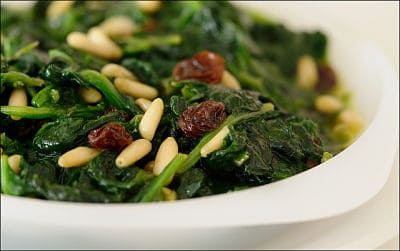This post marks the second installment of our special review section on Edible Identities: Food as Cultural Heritage.
Edible Identities, Food as Cultural Heritage comprises fourteen chapters on diverse foodways and their various claims on cultural heritage. Each chapter focuses on a particular case in heritage making, though not all of these cases have been realised with UNESCO Intangible Heritage Designation. Specific food items are discussed in some chapters while others take a more cuisine base focus.
In each case, the arguments are not (only) for the significance of local products, regions, knowledge and skills, but also how these are politically and economically situated within a complex of local, national and global discourses.
As editors Brulotte and Di Giovine state, the chapters show ‘how food is used to mark insiders and outsiders […], how the same food’s meanings change within a particular society […] and how traditions are “invented” for the economic and social revitalization of communities’ (p. 2).
 The introduction focuses on the symbolic and social aspects of food, its significance in heritage making and a more broad reading of cultural practices as fluid and changeable. It discusses the cultural and political value of food and how specific person-place identities are invoked in discourses around authenticity and heritage. It also explains the formation of UNESCO’s world heritage lists and how the preference for the monumental heritage aimed to be corrected with a later list of intangible cultural heritage, bringing democratic, ‘holistic and living notions [to] heritage’ (p. 13).
The introduction focuses on the symbolic and social aspects of food, its significance in heritage making and a more broad reading of cultural practices as fluid and changeable. It discusses the cultural and political value of food and how specific person-place identities are invoked in discourses around authenticity and heritage. It also explains the formation of UNESCO’s world heritage lists and how the preference for the monumental heritage aimed to be corrected with a later list of intangible cultural heritage, bringing democratic, ‘holistic and living notions [to] heritage’ (p. 13).
The editors’ overall argument is that food as cultural heritage is subject to commodification, standardisation as well as transformation in the longer term.
In the absence of specific editorial guidance on how each chapter addresses these issues, this review will offer some overarching themes to appreciate the nuances of each chapter within a smaller collective. These themes are legitimacy, contestation, new traditions, and home foods as national culture.
Considering the legitimacy inherent in heritage claims, Belasco’s chapter inscribes a terroir on the now sanitized landscape of Washington, DC. Having been cleansed of its local people and its local food, Belasco invites us to re-imagine its previous history through a commensal landscape, in the Potomac river, through reference to early slave gardener entrepreneurs, and in a foundational foodie – Thomas Jefferson, who supported local producers and brought democracy to the dinner table. Castellanos and Bergstresser also address legitimacy and heritage, this time in Mexico and through connections to corn as inherent identity. Various encounters have attempted to separate Mexicans from corn, through colonisation and Christianisation. Amid more recent threats to corn production from cheaper and homogeneous US imports, Mexican farmers continued to produce their own local varieties against economic rationality. Although there have been significant changes in the production of corn through processes of mechanisation and fortification, the discourse on corn as tradition and national heritage remains.

Bendix also addresses legitimacy through the ubiquity of German bread. She comments that neither the taste nor the production of bread is at stake in a heritage designation, but a ‘global valuation of culture itself’. While she outlines other courses bread makers could take, such as geographical indication, she eventually concludes that seeking designation is an appropriate course for German breadmakers, whose livelihoods and traditions of practice are under threat. Garcia Fuentes et al. reveal how investment in tradition helped revive Catalan cuisine and grant Spain UNESCO designation through the Mediterranean diet. While modernisation in food production took place in the late 20th century, this remained partial. The maintenance of a central market place helped stave off the encroachment of shopping malls and later became the vehicle ‘for economic and urban renewal’ (p. 164), particularly in terms of attracting tourists to Barcelona for its cuisine and the subsequent incorporation of immigrant cuisines to its cultural landscape.
Williams-Forson brings to the forefront identity contestations through African American cuisines. She points out that slaves were from different social and geographical circumstances, in Africa and in their enslavement, which influenced what and how their foods were reproduced and reinvented. While outsiders may perceive African American foods as ‘the same’ (p. 93), Williams-Forson reveals that they are prepared and eaten differently, reflecting different historical and ethnic identifications of African American groups. Counihan’s chapter similarly challenges the rhetoric of singular cultural heritage amid global flows of people and products through production and consumption. She notes the looseness of Sardinian cuisine, incorporating items only recently available, but also its rigidity in excluding immigrant cuisines through the invisibility of their food on the Italian landscape. She argues for multiple localisms in food democracy, where ‘all the voices of the food system are heard’ (p. 224).
Brulottte and Starkman explore tangential claims in Oaxaca to cultural heritage based on the UNESCO designation granted to Michoacan/Mexican cuisine. Local contestations have arisen around the production rights of a cooking process, caldo de piedra. This chapter shows how heritage demarcation in one part of Mexico can create tourist and capitalist opportunities for others to mark their own heritage classification. Grasseni also focuses on contestations for heritage production, with the example of three cheeses from northern Italy and the struggles in gaining Protected Designation of Origin (PDO). In these battles, Grasseni reveals the disputes over production area, rights of naming and the need for political support as these are implicated in the process of heritagisation. Her chapter makes apparent the constructed nature of patrimony and its appellation into heritage through commercial interests and political power.

Terrio addresses the recent tradition of fine chocolate making in France. Here, chocolatiers align themselves with other historical precedents whilst also espousing dynamism and change. The chapter reveals aspects of both, though the stronger element lies in elite chocolatiers aiming to gain similar recognition to the UNESCO designation of the French Gastronomic Meal for their practice. De St Maurice considers notions of authenticity in post WWII revival of ‘heirloom vegetables’ (p. 67) in Japan. Origin, content and process all contribute to the vegetables’ construction as heritage, although these each employ selective interventions in producing these ‘authentic’ (p. 75) varieties. By contrast, Paxson focuses on recent traditions in American cheese making, where the practice is declared as one of invention. This entrepreneurial spirit permeates cheese making in the US, whether in early cheese makers’ adaptation to seasonal fluctuations, or in the contemporary fashion of ingredient substitution for novelty. Kozorog also interrogates the creation of new traditions through a mythical homemade brandy in Slovenia. The chapter casts its net widely to affirm the wider reckoning of hallucinogenic substances, yet the brandy itself, if it exists at all, is not hallucinogenic, but a poorly made local drink with little to lend it to global heritage certification.
In consideration of home foods, Sammells explores the French gastronomic meal, Michoacan/Mexican cuisine, and Bolivian tourist cuisine. While the former two have intangible heritage designation for their quotidian provisioning, the latter gains its global appeal through tourism and its imaginary. Using the case of llama meat, which Bolivian locals do not eat, she notes how tourists assert their vision of foods eaten at home, and have this food produced especially for their consumption. Finally, DiGiovine considers the valorisation of local, non-elite foods in the connection to the hometown of Padre Pio, a globally valorised saint. Here home cooked food (or its industrially produced semblance) from this town is honoured as heritage cuisine due to Pio’s association. In his discussion, DiGiovine emphasizes the re- aspect to the invention of tradition, in the reinvention, revalorisation, repackaging, and revitalising of food and Pio’s birthplace through home cooked local pastoral foods, which are desired by Italian and international tourists.
The volume’s strengths lie in its bringing together of various heritage discourses around food and how these are each implicated in wider circles of affirmations and contestations. The volume’s weaknesses lie in its lack of explicit guidance through which to approach the collection as a whole, leaving the reader to discern this as they progress through it.
Further, given the criticisms levelled at UNESCO’s monumental and intangible heritage designation for being too European and western focused, it seems a missed opportunity not to engage further in voices excluded from the heritage/tourism canon, particularly through including more cuisines from the Global South. Some authors in the volume draw attention to those whose cultural work and cuisines have been marginalised at the table of global commensality. Greater focus on these and others’ intangible heritages would bring light to their non-valorised heritage practices, as well as help unpack the economic, social and political structures preventing them from marking their traditions more widely.
Brulotte, Ronda L. and Di Giovine, Michael A. 2014. Edible Identities: Food as Cultural Heritage. Farnham: Ashgate. 244 pp. Hb: £65.00. ISBN: 9781409442646



